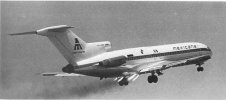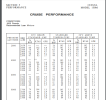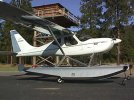his engine doesn’t run on the same fuel.
"My engine" was just an example of something that could generate the required thrust for the required weight, to silence the "physics don't work for this" crowd. The actual powerplant could be something completely different.
Even if a turbine engine was used, they can run on leaded gasoline. Not for 1000 hours, since the lead deposits will have an impact on overall life. But in this application, longevity is not a design goal.
The time limit has more to do with the installation and certification effort required to use the existing fuel supply. Might be easier, cheaper and lighter to have a dedicated fuel tank, even if the fuel is the same. Hence the time limit.
retrofitting a pod like this
This is a valid point. While it would be "relatively" straightforward to implement in a new airframe build, the retrofit would be almost as difficult as installing a BRS.
On the topic of BRS installs, while they could cover some additional use cases, they overall get used for engine failures. The same argument made over how many fatalities were caused by engine failures can also be applied to BRS installs, yet (even in this topic) the attitude towards them is slightly different now. You're still hauling a load of expensive equipment with non-trivial overhaul costs for the remote possibility of a mishap that would require you to use it.
A BRS retrofit for a 172/182 was in the range of 20k (and I think that was parts only) last time I looked, a couple years ago. Haven't heard of too many takers. The RV-10 has a BRS option now, it's 30k in parts plus labor to install. Haven't seen one with it in the wild yet.
And a BRS retrofit without manufacturer support is very difficult, if not impossible. The failure modes of an improperly attached BRS will result in fatalities when you deploy it, with very little chance of recovery. From my own experience while reaching out to experimental kit makers, a lot of them would not talk to you at all about a retrofit.
Ron Wanttanja made a good point that (at the Cessna level) this would only save two lives a year. The overall number of powerplant failure fatalities per year is about 20-25, out of 200-230 total fatalities per year. That's 10(-ish)% of all GA fatalities.
https://www.ntsb.gov/safety/data/Pages/GeneralAviationDashboard.aspx - great tool for quick data look-up.
I don't think that includes the ones where they couldn't find anything wrong with the engine after the crash, despite it being reported as stopped before. Remove some of those accidents, as they might be in airframes that nobody will attempt to certify such a mod to, due to low production numbers and not enough of them still flying. That might leave you with 10-15 fatalities a year that might be averted. Probably a few off-airport landings with serious injuries and airframes being written off would also not happen. And I think that's also worth considering, too. A broken back that can be avoided might be worth the safety investment.
Depending on how you want to phrase it, you can either be honest and say that it might reduce the total number of GA fatalities by 5% (which isn't a number to be ignored) or that it will reduce the number of engine failure fatalities by 50% (but I agree that it might be a bit dishonest to phrase it this way). And it would be a personal choice to install this in your airframe, if available. Nobody would force you to do it.
Speaking of personal choice...
We don't need to put in fancy electronic attitude indicators (primary or back-up). Our planes have been certified and proven to be IFR-capable with two iron gyros spun by a brittle graphite-vaned vacuum pump, and an electric turn coordinator. Yet a lot of us chose to install thousands of dollars worth of additional equipment just for the extra safety. I'm not even talking about full glass cockpits, just the G-5, GI-275, AV-30 or similar group. Shoulder harnesses are only useful for a handful of scenarios, yet I don't think anyone here would argue against them.
One important point, and I'm sure you've all heard this one before -
Statistics are meaningless until you become one.
Greatest loss of life in GA happens because of loss of control accidents - yet how many pilots practice slow flight and stalls after they get their certificates? A lot of them might do it every two years at their flight reviews (if that). How many people do you know that go out and practice slow flight, stalls and similar things regularly? That might be the topic of another thread/poll.
We (as a group) definitely seem to be thinking bad things only happen to other people.
won't say that it's impossible. What I will say is that it seems to be very complex to design, consumes useful space, will be more expensive than you think (just like everything else on a plane) and will add significant maintenance cost. Is it worth the trade-off vs. CAPS or equivalent? Hmmm.....
This is the kind of conversation worth having. It's definitely not an easy task. If someone was willing to pay 300k today, it might happen. Take that 70k jet engine, add 30k in install costs and 200k in certification costs. Any takers? 99.999999% convinced the answer would be no for a 75-100k airframe.
Hence why the question was asked the way it was asked. It wasn't a case of "do you think this is possible?", but "how much would you pay for it?". Give me enough money and I'll make a washing machine achieve controlled flight. Isn't that how helicopters fly?
Thank you to all that answered the poll. If those are truthful answers, it's actually better than I thought it would be, but the sample size is a bit small.






